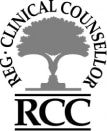- Anger
- Anxiety
- Career
- Couple and Marriage
- Depression
- Grief and Loss
- Relationships
- Self-Esteem
- Shame and Guilt
- Trauma
- Stress
- Men’s Issues
A Comprehensive, Integrative Approach at Wellspring Counselling
Are you interested in EMDR Therapy? You may have heard about it in the news when Prince Harry discussed the helpfulness of this approach and engaged in an EMDR session live on camera.
Our team is prepared to assist you in enhancing your emotional well-being. Contact us to schedule a complimentary 15-minute consultation and discover the advantages of EMDR Therapy in Burnaby.
EMDR stands for Eye Movement Desensitization and Reprocessing, a therapy developed in 1989 by Francine Shapiro, PhD. This therapy helps to heal emotional and psychological issues and reduce symptoms of trauma, anxiety, and depression.
EMDR is recognized by the American Psychological Association (APA) and endorsed by the Department of Veterans Affairs (VA). It can also help manage stress, improve relationships, and develop self-compassion. EMDR therapy is an eight-phase treatment that allows individuals to process and overcome the effects of trauma. Through targeted sessions, clients can desensitize distressing memories and reframe negative beliefs. Our approach includes:


EMDR therapy aims to help individuals process distressing memories and experiences. The therapist uses eye movements or tapping on both sides of the body while the client focuses on an image, feeling, or memory associated with a traumatic event.
This process facilitates the brain’s natural healing and enables the client to progress by overcoming obstacles. It can also aid the individual in gaining a better understanding of their trauma by establishing new connections between past events and current experiences. This often provides relief from symptoms such as anxiety, depression, anger, and other negative emotions stemming from unresolved trauma.
Is Eye Movement Desensitization and Reprocessing (EMDR) therapy effective? EMDR therapy has gained a lot of attention for its effectiveness in treating trauma, anxiety, and other mental health issues. Initially developed for individuals with PTSD, it has since been utilized to address a broad spectrum of problems, including depression, phobias, and chronic pain.
Research has shown that EMDR is an effective method for reducing emotional distress caused by traumatic memories. This therapy involves using techniques such as eye movements or tapping while recalling distressing events to help reprocess and lessen the impact of these memories. This process allows the brain to heal, similar to during REM sleep.
After just a few sessions, many clients experience significant improvement and long-lasting relief from symptoms. EMDR therapy is effective for treating trauma and enhancing overall emotional well-being, making it a versatile tool in psychotherapy.
While individual experiences may vary, there is mounting evidence that EMDR is a highly effective treatment for individuals grappling with emotional distress.

EMDR is an effective therapy for addressing unresolved trauma, anxiety, depression, and other mental health issues. It can also help improve relationships with others and foster self-compassion. EMDR has shown success in both individual and group settings, making it a versatile therapy for a wide range of people.
Affiliations


Clients Say
Mr. Gordon is someone that captures the spirit and the heart of active engagement. He is empathic, genuine and incorporates action and creative problem solving into his practice. I have no hesitation in recommending Mr. Gordon as an effective career and personal counsellor.
I had no experience with therapy and was unsure of the whole process. Alistair made everything very accessible and unintimidating. It was clear that he puts quite a lot of effort and preparation into every session. I'm so glad that I decided to do this, and could not have asked for a better person to help me with this. I would highly recommend Alistair to anyone who has ever thought that they might benefit from talking to a professional.
I am a young professional which for a long time now, has struggled with anxiety, insecurity, and difficulty in finding effective life coping mechanisms. Alistair was referred to me by a friend and upon the first meeting, I found Alistair to be empathetic, compassionate and intuitive. I have now been seeing Alistair regularly for 6 months and through that time my anxiety has significantly decreased, I have found effective methods of dealing with stress, found support dealing with identity issues, as well as finding inner strength to get through a tough break up. Alistair again and again, went the extra mile -thank you Alistair for your candor, openness and a safe space to get support. Thank you for playing such a large role in keeping me healthy and positive.
I have been working with Alistair Gordon as my counsellor at Wellspring for almost 6 months now and cannot begin to tell you how far I have come with his help. I have tried working with other counsellors and therapists in the past but never really found one that clicked for me. I always felt judged, unsupported, and rushed at those appointments until I booked my first appointment with Wellspring and with Allistair. To anyone on the fence about booking an appointment or engaging in therapy: if you are willing to do the work, you couldn't ask for a better partner in your healing journey.
When I decided to find a counsellor, I tried to find someone that I could relate to, someone that is like-minded and down-to-earth and with Alistair I really found the right person. He uses an integrative approach, showed me techniques to relax and get aware of my emotions, and helped me see things in a new perspective. Of course this is an ongoing process but I enjoy meeting and working with Alistair every time. The downtown office is a very neutral place - not too intimate, not too clinical - which is helpful to overcome apprehension, especially the first couple of times. What I find remarkable is that Alistair almost always knows what I'm trying to say, even if I can't put it into words. Working with Alistair helped me a lot and it was the right decision to put my trust in him.
Alistair really cares about you the person, and I could really feel him trying to tackle my challenges. He was also very available for off-session contact via text and email. I think he did a great job with confronting me where I needed it. Alistair always could remember the important peoples' names in my personal life, which really helped with talking about my problems. I really felt like I was talking to a friend.
Alistair is an awesome counsellor. He has been so helpful in working with me through some tough times in my life. He's always been available to chat with me in-between sessions. I'd recommend Alistair to anyone - he's really the ideal counsellor in my view.
I enjoy how sessions are collaborative where I can take the lead for the direction of what we talk about, and at the same time I know that Alistair will offer helpful guidance and insight along the way. I also like how we focus on the future instead of just the past. I find this to be empowering and helpful to move forward in life.
Alistair is an awesome counsellor. He has been so helpful in working with me through some tough times in my life. He's always been available to chat with me in-between sessions. I'd recommend Alistair to anyone - he's really the ideal counsellor in my view.
I have always felt very comfortable with Alistair. He has a calming presence, and you can tell he cares about being the best counsellor for you. He helps you with all aspects of your concern, and is always able to help me find a solution to the problem I'm having.
Alistair is an exceptionally talented counsellor and has always demonstrated strong ethics, great compassion, wisdom and respect for others. I highly recommend him as a counselling practitioner.
If you live in or near Burnaby and need EMDR therapy, Wellspring Counselling can help. Our team of certified EMDR therapists offers compassionate support and a safe space to address issues affecting your mental health.
We understand that everyone’s experience with trauma or stress is unique, so we adjust our approach to fit your individual needs.
